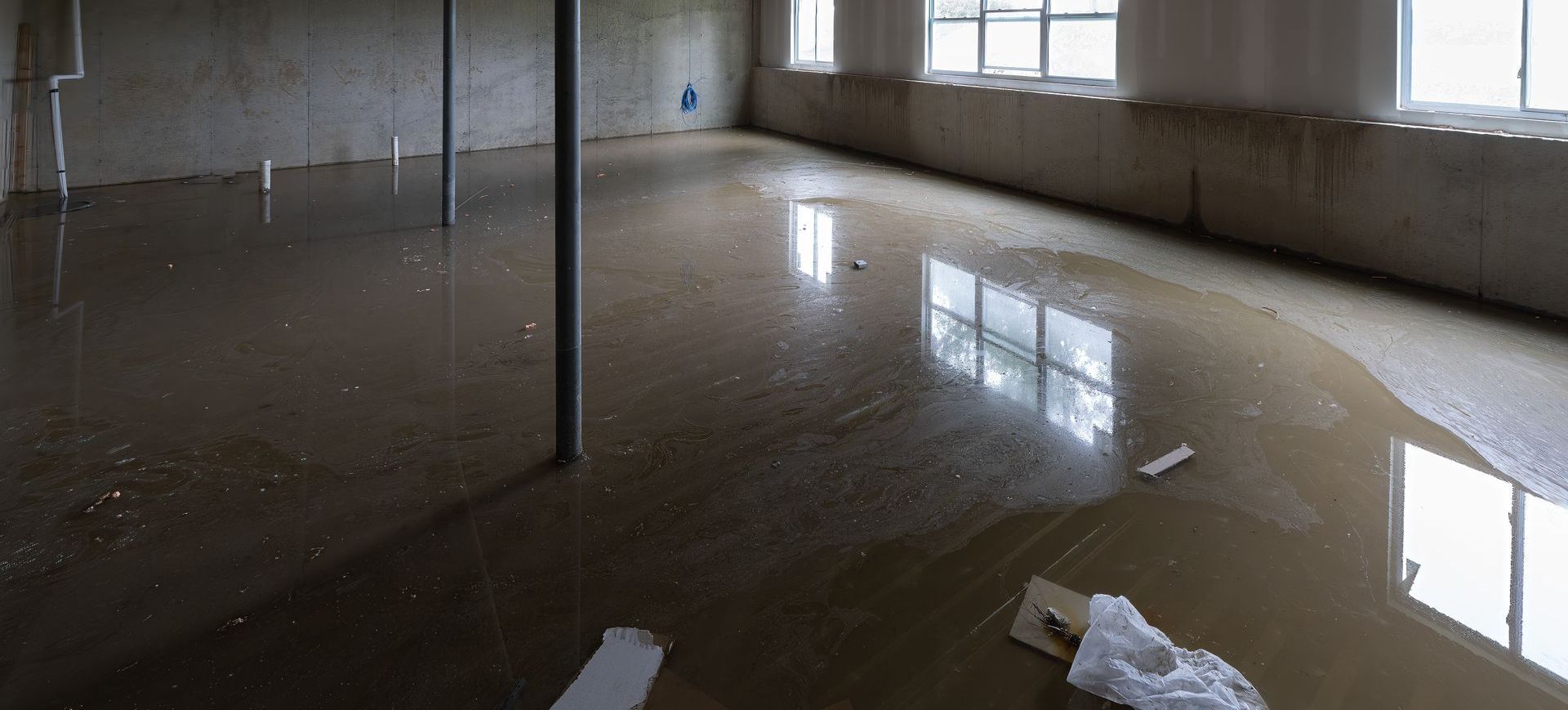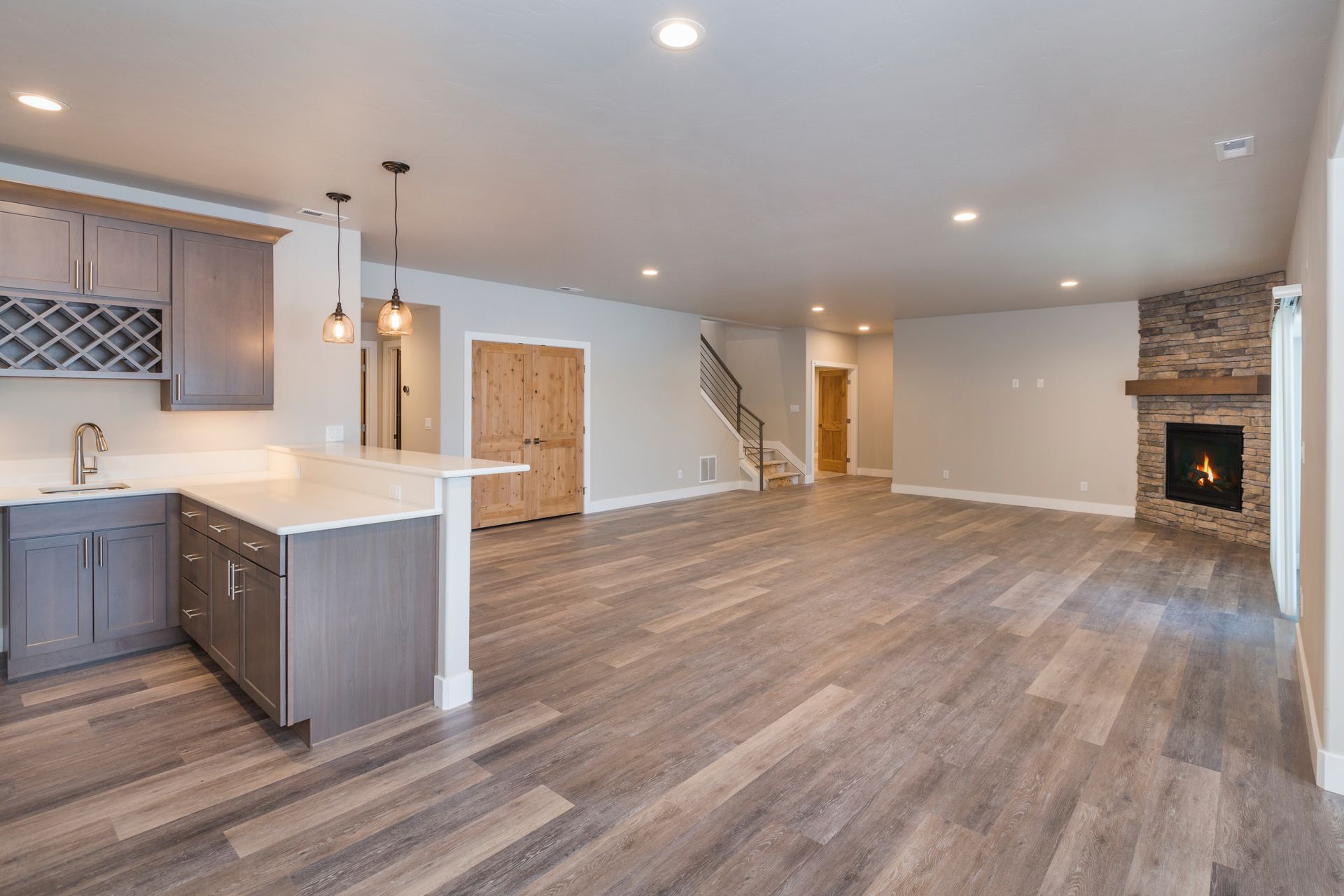Effective Waterproofing Secrets: Do's and Don'ts for Basement Waterproofing
Is your basement prone to water leaks and flooding? If so, you're not alone. Basements are one of the most vulnerable areas in a home when it comes to water damage. This susceptibility to moisture can lead to a host of problems, from structural issues to health concerns like mold and mildew growth. But the good news is that with the right knowledge and approach, you can effectively safeguard your basement against these threats. In this guide, we'll share some essential do's and don'ts for maintaining a dry basement in your home.
Understanding Why Basements Take On Leaks

Basements, by their very nature as the lowest part of a house, are inherently more susceptible to water leaks. In fact, a study from 2015 - 2019 showed that water damage claims accounted for 47% of homeowners' insurance losses [1]. This vulnerability can be attributed to a variety of factors that converge to make basements a prime target for dampness and water intrusion.
A key factor is groundwater pressure, often referred to as hydrostatic pressure. This phenomenon occurs when water accumulates around the foundation, especially during periods of heavy rain or snowmelt. The saturated soil exerts pressure against the basement walls and floor, forcing water to seep through any available openings.
Another critical aspect is the efficiency of the home's drainage system. Basements can become collateral damage when gutters and downspouts are either improperly installed or poorly maintained. Clogged or misdirected drainage systems lead to water pooling around the foundation, eventually making its way into the basement.
Furthermore, the integrity of the foundation itself plays a significant role. Over time, even the tiniest cracks in the foundation can evolve into gateways for water entry. These cracks can be the result of natural settling, environmental stress, or construction flaws, leading to ongoing dampness or, in more severe cases, extensive flooding.
Understanding why basement leaks happen, lets go over some of the Do's and Don'ts for maintaining dry basement walls.
The Dos of Basement Waterproofing

Preventing water from seeping into your basement requires a proactive approach. Here are some essential do's for effective basement waterproofing:
DO Keep Your Gutters Clean and in Good Condition
Maintaining your home's gutter system is a vital part of basement waterproofing. Gutters direct rainwater away from your home's foundation, preventing it from pooling around the basement. But when gutters are clogged with leaves, debris, or are damaged, water can overflow and accumulate around the foundation. This increases the risk of basement leaks. Regular cleaning and routine inspection for damage will ensure that your gutters are working efficiently, effectively reducing the chance of basement water intrusion.
Additionally, you can extend the life of your gutters by installing gutter guards. These devices prevent debris from entering and clogging up your gutter system, making maintenance tasks more manageable. Routine gutter cleaning and maintenance can save you from having to deal with expensive basement water damage repairs.
DO Grade Your Property Away From Your House
Another way to prevent water from pooling around your foundation is by making sure that your property is graded away from your house. This means the ground should slope downward, creating a natural runoff path for rainwater. A properly graded yard will direct water away from your home, reducing the likelihood of basement leaks.
If you find that your property is not adequately graded, you can make corrections by adding soil and sloping it away from your foundation. It's best to consult with a professional landscaper or contractor if you're unsure how to go about this process.
DO Inspect Your Foundation for Cracks
Regular inspection and maintenance of your foundation is a critical preventative measure for basement water damage. Cracks in the found dation, no matter how small, can be the starting point for significant water issues. Regularly inspect your foundation for cracks and fissures. If you identify any, it's essential to seal them as soon as possible. Quality waterproofing compounds can be used for minor cracks, but for larger ones or if there are many cracks, it's wise to do a search for professional waterproofing services near me and contact a local waterproofing company. Remember, the earlier you address these problems, the less costly and less time-consuming the solution will be.
DO Install a Sump Pump in Your Basement
One of the most effective ways to keep your basement dry is to install a sump pump. A sump pump is a device that collects accumulating water in your basement and pumps it away from your house. The water is directed into a specially designed sump pit, and when the water level in the pit reaches a certain point, the pump automatically switches on and dispels the water. This is particularly useful in areas prone to heavy rains or in homes with basements below the water table. Remember to regularly inspect and maintain your sump pump to ensure it is in good working condition. If you don't already have a sump pump, consider consulting with a professional basement waterproofing service to assess your needs and recommend the best system for your situation. With a sump pump, you can proactively mitigate the risk of basement flooding and water damage.
The Don'ts of Basement Waterproofing
Along with the do's, there are also some important don'ts to keep in mind when it comes to basement waterproofing. These are things that can potentially exacerbate moisture issues and lead to expensive repairs.
DON'T Ignore Moisture or Dampness Signs
Signs of moisture or dampness in your basement should not be ignored. These can include musty smells, visible water stains, or mold and mildew growth. If you notice any of these signs, it's essential to address them immediately before they escalate into more severe issues like structural damage or health hazards.
DON'T Attempt DIY Repair for Major Wall Cracks
While it may be tempting to try and fix significant basement wall cracks on your own, it's generally not a good idea. Large cracks often signal deeper structural issues that require professional attention. DIY repairs may provide a temporary fix, but without addressing the root cause, the problem is likely to recur. Additionally, improper repair can inadvertently worsen the issue, leading to more extensive and costly damage. A professional basement waterproofing service can accurately diagnose the issue, provide sustainable solutions, and prevent future water leaks.
DON'T Neglect Regular Maintenance
Regular maintenance is crucial for keeping your basement dry. This includes routinely checking and cleaning gutters, inspecting the foundation for cracks, and ensuring that the sump pump is in good working condition. Ignoring maintenance tasks can leave your basement vulnerable to water damage and potentially costly repairs.
DON'T Overlook Indoor Humidity and Ventilation
Another often overlooked aspect of basement waterproofing is indoor humidity and ventilation. High levels of humidity can create the perfect environment for mold and mildew growth, leading to health hazards and potential structural damage. Ensure that your basement has adequate ventilation, consider using a dehumidifier, and regularly monitor humidity levels to prevent excess moisture buildup.
Additional Tips for Basement Waterproofing
While the do's and don'ts provided earlier are crucial, here are some more tips that can further assist you in preventing basement water damage.
- Install a French Drain
A French drain is a trench filled with gravel or rock that redirects surface and groundwater away from your home. It's an effective solution if your property has issues with surface water, like a soggy lawn or a driveway that washes out. If water is getting into your basement, it's a good idea to install a French drain.
- Keep Your Downspouts Away from the Foundation
Ensure that your downspouts are directing water at least 5 feet away from your foundation. This helps prevent excess water from saturating the soil around your home and seeping into the basement.
- Fix Leaky Pipes and Plumbing
It's not just external factors that can cause basement leaks - internal plumbing issues can also contribute. Fix any leaking pipes or fixtures to prevent water from seeping into your basement walls and floors.
- Consider moving mulch and flower beds away from your foundation.
Mulched areas tend to retain moisture and flower beds require constant watering. The combination when placed against your home's foundation increases the chances of water damage.
While there is no one size fits all to keeping your basement dry, there are solutions that can be tailored to your specific needs. Remember, proactive measures such as regular maintenance and addressing issues early on can save you time, money, and headache in the long run.
If you're unsure about the best course of action for your basement waterproofing needs, don't hesitate to contact us. We provide basement waterproofing services in Hartford County and Western MA communities.
Contact us today at (413) 536-8023 or contact us online schedule a free quote.
References:
[1]: https://utilitiesone.com/the-impact-of-hydrostatic-pressure-on-basement-water-leakage/ "The Impact of Hydrostatic Pressure on Basement Water Leakage."


